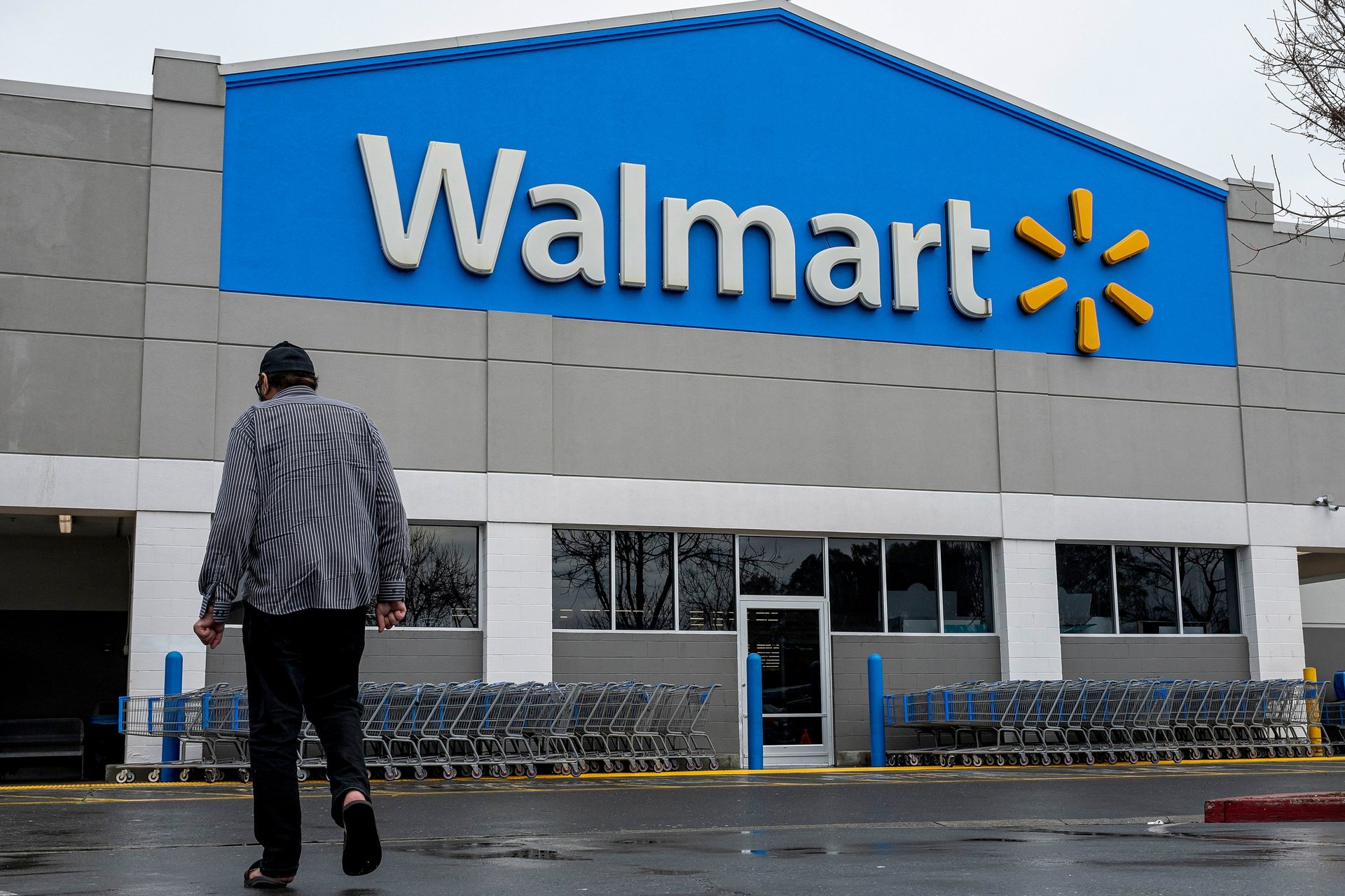Walmart shoppers come more often than Target's — and stay longer
The economic uncertainty of inflation and tariffs will continue to hound retailers in 2025

While Walmart (WMT) is lowering its earnings expectations for the year ahead, America’s largest retailer has plenty of baked-in advantages over competitors to monetize cash-strapped, inflation-weary consumers.
Suggested Reading
Recent data from the retail analytics platform Placer.ai sheds some light on what is happening in the aisles.
Related Content
According to Placer.ai, Walmart visitors linger longer in stores. 20.7% of the chain’s visits last longer than 45 minutes compared to Target’s (TGT) 17.1%.
Placer.ai concludes that since Walmart’s shoppers tend to be more rural, they drive longer distances and may linger longer once they are there to squeeze the most out of the trip. But the more extended visits aren’t just reserved for lazy Sundays. Walmart still receives a larger share of weekday visits than Target – perhaps thanks to its larger share of unmarried shoppers with fewer weekday commitments, Placer.ai suggests.
The fact that Walmart stores also have full grocery lines compared to Target’s generally more limited lines also helps explain the longer store visits.
“Walmart seems to attract more repeat monthly visitors (who visit the chain at least twice a month), perhaps thanks to the chain’s extensive grocery offerings and to its popularity among rural and semirural segments who may not have a variety of retail options to frequent,” Placer.ai. concludes.
Roger Beahm, Professor of Practice in Marketing at Wake Forest University’s School of Business, isn’t surprised that shoppers stick around longer at Walmart and prescribes a variety of reasons for the phenomena.
One reason is simply size. Walmart stores are, on average, larger than Target’s (approximately 180,000 square feet vs. 120,000 for Target).
“This means it takes shoppers longer to simply get to a specific merchandise area once they are in the Walmart store versus in a Target store,” Beahm says. Larger also means more merchandise, which means more choices, which means customers spend more time mulling over which brand of toothpaste or what garden rake they want.
“Target, on the other hand, offers fewer options for their customers, curating these offerings specifically to meet the needs and wants of a more narrowly defined target audience. With fewer choices, Target customers can often select their desired items more quickly,” Beahm says.
Beahm says that 2025 will present Walmart and rival Target with perils to navigate.
“While Walmart and Target both benefit when consumers are more price sensitive, inflation and tariffs still represent major challenges to these chains going forward as shoppers will cut back further on discretionary spending and focus primarily on staples,” Beahm says. He added that both chains are going to need to find new ways of convincing shoppers they will still be able to find good value across the broad range of merchandise being offered for sale. But lower prices can’t mean lower quality and Beahm fears that outcome.
Beahm Walmart and Target will need to find ways of absorbing the added costs of manufacturing and raw materials driven by inflation and tariffs. Beahm says this could mean retailers like Walmart and Target end up with some lower-quality manufactured goods.
“Unfortunately, experience shows this would only hurt the retailer in the long run, though. Shoppers are still interested in some minimum level of quality in the products they buy even when the products are discount-priced,” Beahm says.
None of this will be easy, especially if inflation continues to dog consumers.
“The bottom line is that retailers like Walmart and Target are now going to have to walk a very fine line in the coming months,” Beahm says.